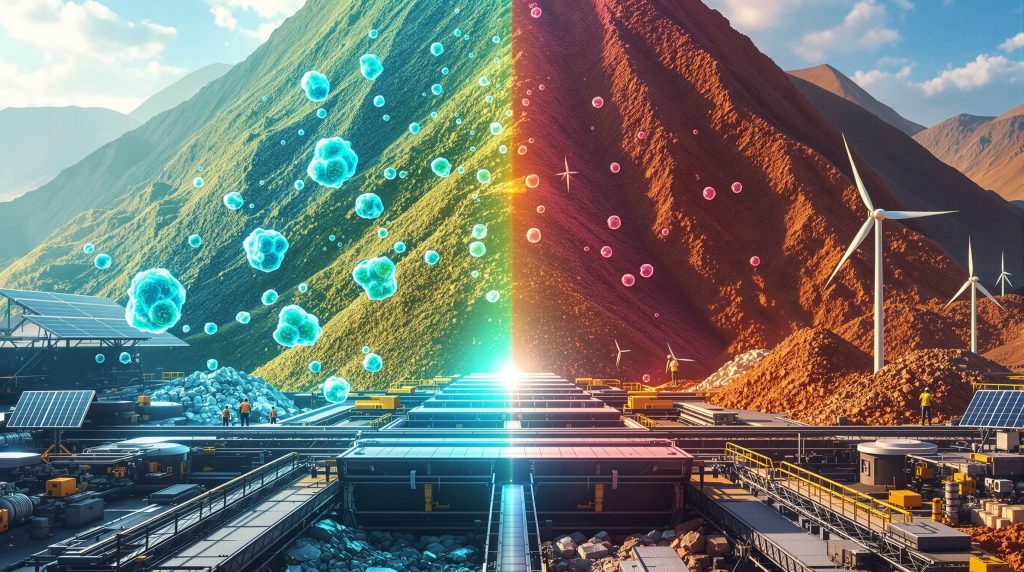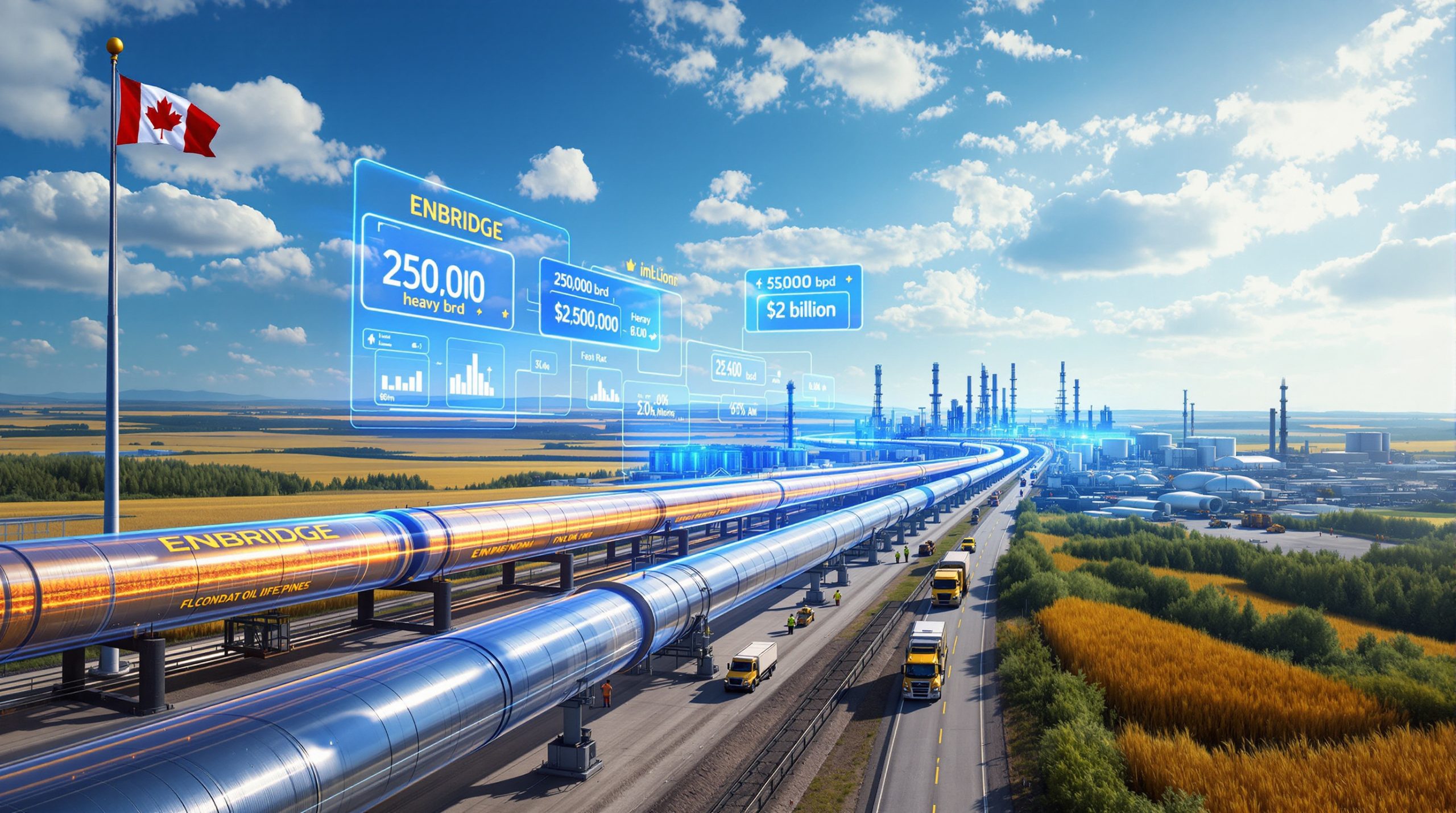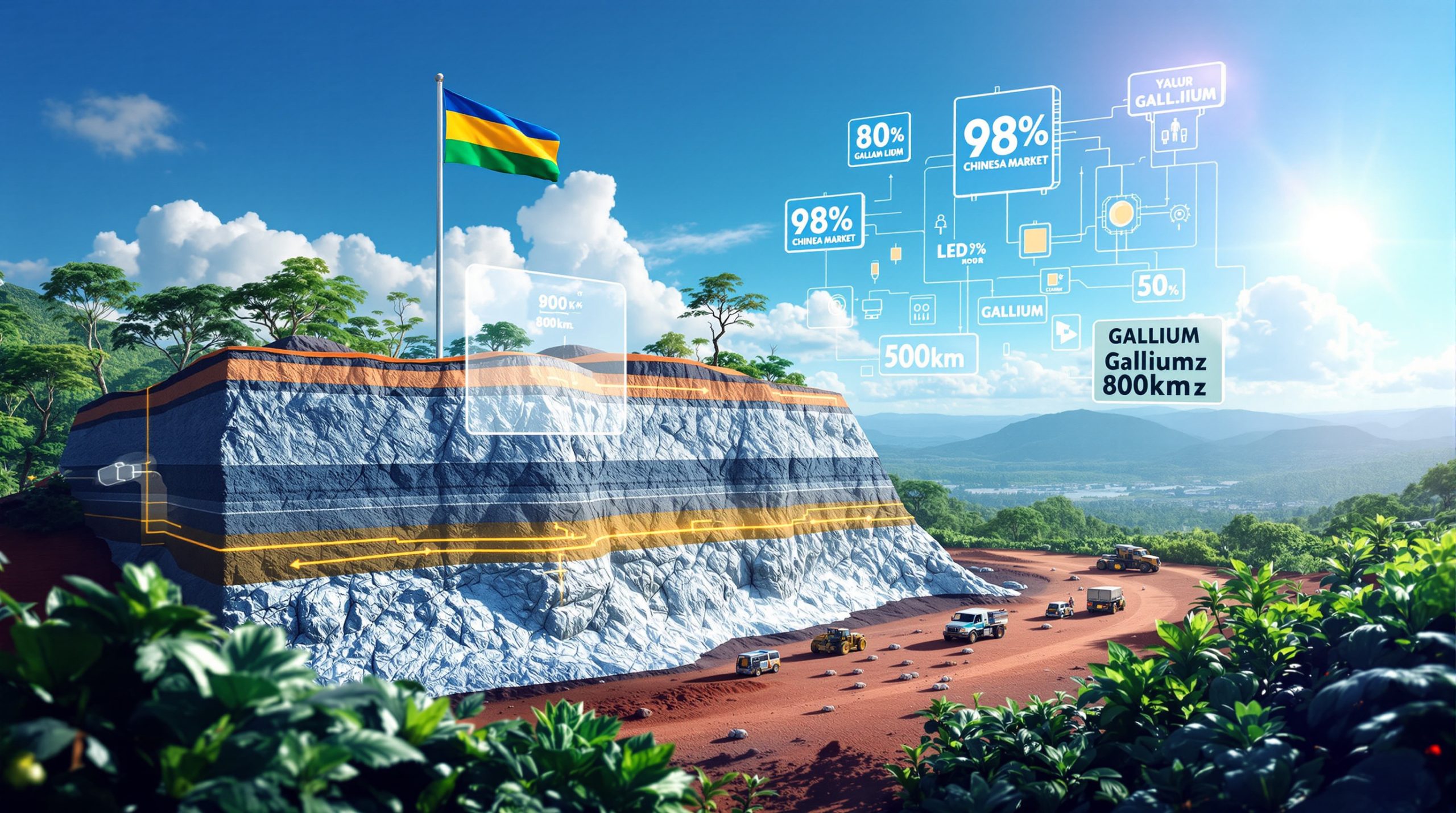Mining Waste: The Untapped Resource for Clean Energy Supply Chains
In the rapidly evolving landscape of clean energy technologies, a surprising hero may be emerging from an unlikely source: mining waste. These byproducts and leftover materials from extraction processes contain significant quantities of critical minerals essential for renewable energy systems, batteries, and other clean technologies. What was once discarded as an environmental liability is increasingly recognized as a valuable secondary resource that could strengthen domestic supply chains while reducing environmental impact.
Research from the Colorado School of Mines demonstrates remarkable potential: extracting even small percentages of minerals from existing mine waste could replace significant portions of current U.S. imports for clean energy materials, potentially transforming the global mining waste for clean energy supply chain.
What Makes Mining Waste Valuable for Clean Energy?
Mining waste contains abundant quantities of minerals crucial for clean energy applications. When mining companies extract targeted minerals like copper and gold, they typically focus on separating these specific materials while discarding the rest as tailings or waste rock. However, these "leftovers" frequently contain substantial concentrations of other valuable minerals.
The strategic value of mining waste lies in its accessibility. These materials have already been excavated, crushed, and partially processed—eliminating the most resource-intensive and environmentally disruptive steps of mining. By developing advanced extraction methods for these pre-processed materials, companies can access critical minerals with significantly lower energy requirements and environmental impacts.
Furthermore, utilizing existing mining waste solutions reduces the need for new land disturbance, minimizes habitat destruction, and presents opportunities to remediate legacy mining sites while extracting valuable materials—effectively turning environmental liabilities into assets.
How Abundant Are Critical Minerals in Mining Waste?
Surprising Mineral Concentrations in Existing Waste
A comprehensive analysis of thousands of ore samples from 54 active U.S. hard rock metal mines revealed remarkable concentrations of critical minerals in mining waste. According to Elizabeth Holley and colleagues at the Colorado School of Mines, extracting just 1% of certain minerals from mining byproducts could replace all current U.S. imports of those materials.
Many critical minerals exist in these waste repositories at concentrations comparable to primary ore deposits. In some cases, waste piles contain higher concentrations of certain minerals than the original targeted metals, presenting a compelling case for reprocessing these materials.
The abundance varies by mine type and mineral. Copper mine tailings frequently contain significant amounts of cobalt and molybdenum, while iron ore waste often holds rare earth elements and vanadium. These concentrations represent vast untapped resources sitting in plain sight.
Statistical Overview of Critical Minerals Recovery Potential
| Critical Mineral | Recovery Rate Needed to Replace Imports | Primary Clean Energy Applications |
|---|---|---|
| Rare Earth Elements | 10-30% | Wind turbines, EV motors |
| Lithium | 20-40% | Batteries, energy storage |
| Cobalt | 15-25% | Batteries, solar panels |
| Nickel | 30-50% | Batteries, hydrogen production |
| Copper | 10-20% | Transmission, solar panels, EVs |
| Graphite | 60-90% | Batteries, fuel cells |
While some minerals would require higher recovery rates to meet domestic demand, the potential remains significant. Even partial recovery could substantially reduce import dependencies and strengthen supply chain resilience for critical clean energy materials.
Why Is Mining Waste Reprocessing Gaining Momentum?
Supply Chain Security Concerns
Recent global disruptions have highlighted the vulnerability of critical mineral supply chains. Western nations face significant dependencies on a small number of countries for essential materials:
- China controls approximately 60% of rare earth element processing globally
- Over 70% of cobalt comes from the Democratic Republic of Congo
- Indonesia dominates nickel production with nearly half of global supply
- Supply disruptions during recent global crises exposed systemic vulnerabilities
These dependencies create economic and national security risks that mining waste recovery could help mitigate by establishing domestic sources of critical materials. As U.S. Energy Secretary Chris Wright noted, "For too long, the United States has relied on foreign actors to supply and process the critical materials that are essential to modern life and our national security."
Environmental Benefits of Waste Reprocessing
Reprocessing mining waste offers multiple environmental advantages compared to new mining operations:
- Reduces the need for new land disturbance and habitat destruction
- Decreases water consumption by up to 60% compared to primary mining
- Lowers energy requirements by 40-75% for most minerals
- Minimizes acid mine drainage and other pollution from existing waste piles
- Creates opportunities for site remediation during reprocessing
By extracting additional value from already disturbed sites, mining waste recovery represents a more sustainable mining transformation to meeting mineral demands for clean energy technologies.
What Technologies Enable Mining Waste Recovery?
Innovative Extraction Methods
New technologies are transforming the economics and feasibility of recovering minerals from waste:
- Advanced bioleaching uses specialized microorganisms to extract metals from low-grade waste
- Electrochemical recovery systems can selectively remove specific metals from solution
- Hydrometallurgical processes enable selective extraction without high-temperature processing
- Machine learning algorithms optimize recovery rates and reduce chemical usage
- Nanotechnology enhances separation efficiency for complex mineral mixtures
These technologies continue to advance, with ongoing research improving selectivity, efficiency, and cost-effectiveness. As extraction technologies mature, previously uneconomical waste resources become viable sources of critical minerals.
Carbon Capture Integration
Some mining wastes offer an additional benefit beyond mineral recovery—they can sequester carbon dioxide from the atmosphere:
- Magnesium and calcium-rich mining tailings naturally absorb CO₂ through mineral carbonation
- Enhanced mineral carbonation techniques accelerate this process
- Studies show that some nickel mine tailings can capture more carbon than the mine's operations emit
- This dual-purpose approach creates carbon-negative mineral recovery operations
By combining mineral recovery with carbon sequestration technology, mining waste reprocessing could contribute to both the supply of clean energy materials and climate change mitigation efforts.
How Economically Viable Is Mining Waste Recovery?
Cost-Benefit Analysis
The economics of mining waste recovery are increasingly favorable due to several factors:
- Rising critical mineral prices improve recovery economics (lithium prices increased 400% from 2020-2023)
- Processing costs continue to decline with technological improvements
- Environmental compliance costs for waste storage are avoided
- Government incentives and funding support development of domestic supply chains
- Transportation costs are minimized by using existing mine infrastructure
As demand for critical minerals continues to grow—with projections indicating a tripling of demand by 2030 and quadrupling by 2040 to meet clean energy transition goals—the economic case for mining waste recovery strengthens further.
Case Study: Successful Waste Recovery Projects
Several projects demonstrate the economic viability of mining waste recovery:
-
Rio Tinto's Kennecott Copper Mine (Utah) – Recovers tellurium, gold, and silver from copper processing waste, generating significant additional annual revenue
-
Phoenix Tailings (Massachusetts) – Extracts rare earth elements from iron ore tailings using carbon-free processes powered by renewable energy
-
Jervois Mining's Idaho Cobalt Operations – Reprocessing historic mine waste to recover cobalt for EV batteries while remediating environmental issues
These operations showcase how companies can create new revenue streams while addressing environmental concerns through innovative waste reprocessing.
What Government Initiatives Support Mining Waste Recovery?
U.S. Federal Programs and Funding
The U.S. government has implemented several programs to accelerate mining waste recovery:
- Department of Energy committed nearly $1 billion for unconventional mining efforts in 2024
- $250 million specifically targeted for recovering minerals from mining byproducts
- Critical Minerals Innovation Hub established to develop new extraction technologies
- Inflation Reduction Act provides tax incentives for domestic critical mineral production
- Defense Production Act authorities activated to support critical mineral supply chains
These initiatives reflect growing recognition of mining waste's strategic importance for domestic supply chain security and clean energy transition.
International Approaches
Other countries are also pursuing mining waste recovery strategies:
- European Union's Critical Raw Materials Act includes targets for recovering minerals from waste
- Australia's Critical Minerals Strategy prioritizes recovery from existing mines
- Canada's Critical Minerals Innovation Fund supports waste reprocessing projects
- Chile requires new copper mines to include plans for reprocessing tailings
This global momentum demonstrates broad recognition of mining waste's potential as a resource rather than merely an environmental liability.
What Challenges Must Be Overcome?
Technical Limitations
Despite the potential, significant challenges remain:
- Complex mineralogy makes selective extraction difficult
- Some critical minerals exist in ultra-low concentrations
- Energy requirements for processing fine-grained materials can be substantial
- Water management in processing operations requires careful planning
- Scaling laboratory successes to commercial operations involves engineering challenges
Ongoing research and development efforts focus on addressing these limitations through improved extraction methods, process optimization, and innovative approaches to mineral separation.
Regulatory and Permitting Hurdles
Regulatory frameworks often impede waste reprocessing:
- Mining waste classified as hazardous material in some jurisdictions
- Permits for reprocessing can be as complex as new mine permits
- Liability concerns for disturbing stabilized waste facilities
- Unclear ownership of historic mining wastes
- Lack of specific regulatory pathways for waste reprocessing
Streamlining regulatory processes specifically for waste reprocessing projects could accelerate adoption while maintaining necessary environmental safeguards.
How Could Mining Waste Transform the Clean Energy Supply Chain?
Potential Impact on U.S. Mineral Independence
Mining waste recovery could significantly reduce U.S. import dependence:
- Potential to supply 25-40% of domestic critical mineral needs by 2030
- Could eliminate imports for certain minerals like manganese and vanadium
- Would create resilience against supply disruptions and price volatility
- Enables faster scaling of domestic clean energy manufacturing
By developing domestic sources of critical minerals from existing waste, the U.S. could reduce geopolitical vulnerabilities while accelerating clean energy deployment.
Long-term Sustainability Benefits
Beyond immediate supply chain benefits, mining waste recovery contributes to long-term sustainability:
- Creates circular economy for mineral resources
- Reduces lifecycle environmental impacts of clean energy technologies
- Transforms environmental liabilities into economic assets
- Provides model for global adoption of sustainable mining practices
- Supports just transition for traditional mining communities
This approach aligns environmental and economic objectives, demonstrating how resource efficiency can support both sustainability goals and economic development.
What Does the Future Hold for Mining Waste Recovery?
Emerging Research Directions
Research continues to improve mining waste recovery potential:
- Developing mineral-specific extraction techniques
- Creating modular, mobile processing units for remote sites
- Integrating artificial intelligence for data-driven mining operations
- Exploring zero-waste recovery systems
- Investigating biological remediation combined with mineral recovery
These research efforts promise to expand the range of recoverable minerals and improve the economics of waste reprocessing.
Industry Transformation Potential
The mining industry itself may be transformed by waste recovery:
- Shift from single-mineral to multi-mineral extraction business models
- Integration of waste recovery into initial mine planning
- Development of specialized waste recovery companies
- Creation of mineral recovery parks where multiple companies process different elements
- New revenue streams from carbon credits for CO₂ sequestration
This transformation could reshape mining economics and practices, creating a more sustainable and efficient industry aligned with clean energy transition goals.
How Can Mining Waste Recovery Be Accelerated?
Policy Recommendations
Several policy changes could accelerate mining waste recovery:
- Create streamlined permitting pathways specifically for waste reprocessing
- Establish tax incentives for critical minerals recovered from waste
- Develop certification standards for sustainably recovered minerals
- Fund demonstration projects at commercial scale
- Support workforce development for specialized recovery skills
These policies would address key barriers to widespread adoption while supporting industry development.
Investment Opportunities
The sector presents various investment opportunities:
- Technology companies developing specialized extraction processes
- Mining companies diversifying into waste recovery
- Environmental remediation firms expanding into mineral recovery
- Infrastructure development for processing facilities
- Specialized equipment manufacturing for waste processing
As Brian McNulty at the University of British Columbia notes, the "opportunity is vast" and could "energize people in government as well as industry to take a closer look at what we're mining."
FAQs About Mining Waste and Clean Energy Supply Chains
What are the most valuable minerals found in mining waste?
Mining waste contains numerous valuable minerals for clean energy applications, with the most economically significant being copper, nickel, cobalt, lithium, rare earth elements, manganese, and vanadium. The specific concentration varies by mine type, with copper mine tailings often containing significant cobalt and molybdenum, while iron ore waste frequently contains rare earth elements and vanadium.
How does mining waste recovery compare to recycling electronics?
Both mining waste recovery and electronics recycling contribute to circular material flows, but they address different parts of the supply chain. Mining waste recovery accesses minerals that were previously uneconomical to extract during original mining operations, while electronics recycling recovers minerals from end-of-life products. Mining waste typically contains lower concentrations of minerals but exists in much larger volumes, making it complementary to electronics recycling efforts.
Could mining waste recovery eliminate the need for new mines?
While mining waste recovery can significantly reduce the need for new mines, it cannot completely eliminate it. Current waste streams contain substantial amounts of critical minerals, but growing demand for clean energy technologies will likely require some new primary production. However, waste recovery can reduce the environmental footprint of mineral production and extend the timeline for developing new mines.
What role can mining waste play in carbon sequestration?
Certain types of mining waste, particularly those rich in magnesium and calcium silicates, naturally absorb carbon dioxide from the atmosphere through a process called mineral carbonation. This process can be accelerated through various technologies, potentially allowing mine sites to become carbon sinks rather than sources. When combined with mineral recovery operations, this creates a dual benefit of supplying critical minerals while reducing atmospheric CO₂.
How does the energy required for waste processing compare to new mining?
Processing mining waste typically requires 40-75% less energy than extracting the same minerals from virgin ore. This efficiency comes from the waste already being crushed and partially processed, eliminating the most energy-intensive steps of mining. Additionally, waste processing facilities can more easily be powered by renewable energy due to their smaller scale and flexibility in location.
Transforming Liabilities into Strategic Assets
Mining waste represents a significant opportunity to strengthen clean energy supply chains while addressing environmental challenges. By developing and deploying advanced recovery technologies, the United States and other countries can reduce their dependence on imported critical minerals, minimize the environmental impact of resource extraction, and accelerate the transition to clean energy.
The transformation of mining waste from environmental liability to strategic asset demonstrates how innovative approaches can simultaneously address economic, environmental, and security challenges. With continued investment in research, supportive policy frameworks, and commercial-scale demonstration projects, mine reclamation innovation could become a cornerstone of sustainable critical mineral supply chains for the clean energy transition.
As demand for critical minerals continues to grow—with battery metals alone contributing 85% of total demand growth over the past two years—mining waste recovery offers a pragmatic path forward that balances supply security with environmental stewardship.
Want to Know When Major Mining Discoveries Happen?
Don't miss another opportunity to invest in the next major mineral discovery. Discovery Alert's proprietary Discovery IQ model instantly identifies significant ASX mineral discoveries, turning complex mining data into actionable insights for investors of all experience levels. Explore how historic discoveries generated substantial returns by visiting the dedicated discoveries page.




